
The Majestic Mogollon Rim: Arizona's Natural Wonder
Discover the Mogollon Rim in Arizona: A Natural Paradise of Scenic Views, Hiking Trails, and Rich History Awaiting Nature Lovers and Adventure Seekers.
The Mogollon Rim is one of Arizona's most breathtaking natural landmarks. Stretching across central Arizona, this geological feature offers visitors sweeping vistas, lush forests, and an abundance of outdoor activities. The Rim rises dramatically from the surrounding landscape, creating steep cliffs and expansive plateaus that are a sight to behold. Nature enthusiasts will find plenty to do at the Mogollon Rim. Hiking trails of varying difficulty levels wind through dense pine forests, leading to stunning viewpoints and hidden waterfalls. Whether you're a casual walker or an experienced hiker, there's a trail for you. Bird watchers and wildlife photographers will also be thrilled by the diverse species that inhabit the area, including elk, deer, and a variety of birds. For those who enjoy camping, the Mogollon Rim offers numerous campgrounds that provide a serene escape from the hustle and bustle of daily life. Many of these sites are equipped with amenities like fire pits and picnic tables, making them perfect for a family outing or a solo retreat. If you're into fishing, the nearby lakes and streams are stocked with trout and other fish, promising a rewarding experience. In addition to its natural beauty, the Mogollon Rim is steeped in history. The area has been home to Native American tribes for centuries, and you can still find ancient petroglyphs and ruins scattered throughout the region. These historical sites offer a glimpse into the rich cultural heritage of the area, adding another layer of intrigue to your visit.
Local tips in Mogollon Rim
- Check the weather before your visit, as conditions can change quickly at higher elevations.
- Bring plenty of water, especially during the summer months, as the area can get quite dry.
- If camping, arrive early to secure a good spot, as campgrounds can fill up quickly.
- Wear sturdy hiking boots, as some trails can be rocky and uneven.
- Don't forget your fishing gear if you plan to try your luck at the local lakes and streams.
- Keep an eye out for wildlife, but remember to observe from a safe distance.
The Majestic Mogollon Rim: Arizona's Natural Wonder
The Mogollon Rim is one of Arizona's most breathtaking natural landmarks. Stretching across central Arizona, this geological feature offers visitors sweeping vistas, lush forests, and an abundance of outdoor activities. The Rim rises dramatically from the surrounding landscape, creating steep cliffs and expansive plateaus that are a sight to behold. Nature enthusiasts will find plenty to do at the Mogollon Rim. Hiking trails of varying difficulty levels wind through dense pine forests, leading to stunning viewpoints and hidden waterfalls. Whether you're a casual walker or an experienced hiker, there's a trail for you. Bird watchers and wildlife photographers will also be thrilled by the diverse species that inhabit the area, including elk, deer, and a variety of birds. For those who enjoy camping, the Mogollon Rim offers numerous campgrounds that provide a serene escape from the hustle and bustle of daily life. Many of these sites are equipped with amenities like fire pits and picnic tables, making them perfect for a family outing or a solo retreat. If you're into fishing, the nearby lakes and streams are stocked with trout and other fish, promising a rewarding experience. In addition to its natural beauty, the Mogollon Rim is steeped in history. The area has been home to Native American tribes for centuries, and you can still find ancient petroglyphs and ruins scattered throughout the region. These historical sites offer a glimpse into the rich cultural heritage of the area, adding another layer of intrigue to your visit.
When is the best time to go to Mogollon Rim?
Iconic landmarks you can’t miss
Mogollon Rim Visitor Center
Experience the breathtaking views and rich natural heritage of Arizona at the Mogollon Rim Visitor Center, your gateway to outdoor adventure.
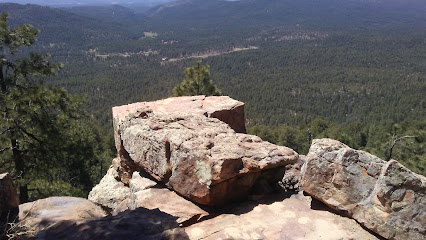
Rim Lakes Vista Overlook
Discover breathtaking views and serene landscapes at Rim Lakes Vista Overlook, a premier scenic spot in Payson, Arizona, perfect for nature lovers.

Paleo Site Monument
Explore the rich prehistoric history at the Paleo Site Monument, a captivating archaeological site in Payson, Arizona, where adventure meets education.

Rim Country Museum and Zane Grey Cabin
Discover the captivating history of Payson at the Rim Country Museum and Zane Grey Cabin, where the tales of the past come alive amidst stunning artifacts.

Mogollon Rim Viewpoint
Discover the stunning beauty of the Mogollon Rim Viewpoint, a top tourist attraction in Arizona offering breathtaking landscapes and serene natural experiences.
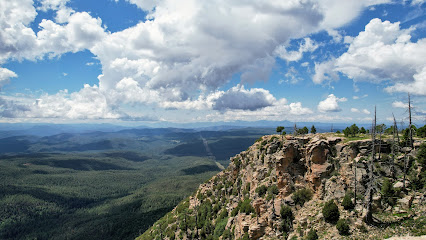
Railroad Tunnel
Discover the breathtaking Railroad Tunnel in Payson, Arizona, where history meets the great outdoors in an unforgettable hiking experience.

Battle of Big Dry Wash
Discover the historical significance of the Battle of Big Dry Wash, a pivotal site in Arizona's rich history, set against stunning natural landscapes.

Unmissable attractions to see
Mogollon Rim Visitor Center
Explore the enchanting beauty of Arizona's Mogollon Rim at the Visitor Center, your gateway to nature's wonders and outdoor adventures.

Woods Canyon Lake
Discover the natural beauty and recreational activities at Woods Canyon Lake, a perfect retreat for camping, fishing, and hiking in Arizona.

Rim Top Trailhead
Discover the breathtaking beauty of Rim Top Trailhead in Payson, Arizona – a paradise for hiking enthusiasts and nature lovers alike.

Paleo Site Monument
Discover the rich history and stunning landscapes at Paleo Site Monument, an archaeological gem in Payson, Arizona, perfect for nature lovers and history enthusiasts.

Rim Country Museum and Zane Grey Cabin
Explore the Rim Country Museum and Zane Grey Cabin for a rich experience of Arizona’s history and literary legacy in Payson.

Carr Lake Trailhead
Discover the serene beauty and adventurous trails at Carr Lake Trailhead in Payson, Arizona, a perfect escape for nature lovers and hikers.

Horton Springs
Discover the serenity of Horton Springs, a picturesque hiking area in Payson, Arizona, where nature and tranquility await every visitor.

Rocky Point Recreation Area
Discover the tranquility of Rocky Point Recreation Area in Payson, AZ, where nature and adventure await at every turn in this pristine park.

Mallard Trailhead
Discover breathtaking trails and stargazing at Mallard Trailhead in Payson, Arizona - a paradise for hikers and nature lovers.

Northern Gila County Historical Society
Discover the captivating history of Northern Gila County at the Northern Gila County Historical Society in Payson, Arizona, a must-see for history lovers.

237 B Trailhead
Explore the breathtaking landscapes and diverse wildlife at 237 B Trailhead, a premier hiking destination in Arizona’s stunning natural beauty.

Essential places to dine
Buffalo Bar & Grill
Discover Buffalo Bar & Grill in Payson, AZ – where hearty meals meet Western charm amidst stunning natural landscapes.

Beeline Cafe Payson Az
Experience delightful breakfasts at Beeline Cafe in Payson, AZ - where every meal is crafted with love and served with a smile.

El Rancho
Experience authentic Mexican flavors at El Rancho in Payson, where every meal is a celebration of culture and community.

Macky's Grill
Discover the heartwarming flavors of America at Macky's Grill in Payson - where family dining meets exceptional service.

Fargo's Steakhouse
Discover Fargo's Steakhouse in Payson: A top destination for succulent steaks and warm hospitality in Arizona.

Crosswinds Restaurant
Discover the flavors of America at Crosswinds Restaurant in Payson - where delicious breakfasts meet breathtaking views.

Pinon Café
Discover the delightful flavors of Pinon Café in Payson - your perfect spot for breakfast and lunch in Arizona's scenic landscape.

Mike's Fish and Chips
Discover the best fish and chips at Mike's Fish and Chips in Payson – where quality meets affordability in every delicious bite.
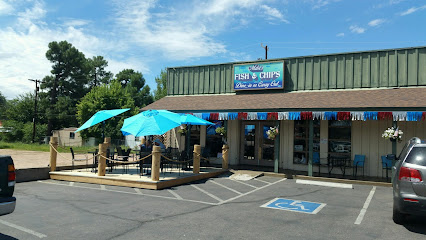
Miss Fitz 260 Cafe
Discover the charm of Miss Fitz 260 Cafe in Payson, AZ – your go-to spot for delicious breakfasts and cozy vibes.

Alfonso's Mexican Food
Experience the vibrant flavors of Mexico at Alfonso's Mexican Food in Payson - where delicious meets affordable in every dish.

Wendy's
Discover delicious fast food at Wendy's in Payson, AZ - home of fresh ingredients and mouthwatering meals that satisfy every appetite.

Duza's Kitchen
Experience authentic Southwestern flavors at Duza's Kitchen in Payson, Arizona - where every meal tells a story.

Tiny's Family Restaurant And lounge
Discover the warmth of family dining at Tiny's Family Restaurant & Lounge in Payson - where delicious meals meet cozy atmosphere.

Creekside Tavern
Discover the charm of Creekside Tavern in Payson, AZ—where great food meets stunning nature in a welcoming atmosphere.

Rim Country BBQ and Wood-Fired Pizza
Experience authentic barbecue and wood-fired pizza at Rim Country BBQ in Payson, AZ—where flavor meets comfort in a welcoming atmosphere.

Markets, malls and hidden boutiques
Walmart Supercenter
Visit Walmart Supercenter in Payson, AZ, for an all-in-one shopping experience featuring groceries, clothing, electronics, and more.

JARS Cannabis - Payson
Experience top-tier cannabis offerings at JARS Cannabis in Payson, Arizona, where quality meets exceptional customer service in a welcoming environment.

Mogollon Rim Visitor Center
Explore the stunning landscapes and rich ecology at the Mogollon Rim Visitor Center in Arizona, a perfect spot for nature lovers and outdoor enthusiasts.

Rim Lakes Vista Overlook
Experience the awe-inspiring beauty of Rim Lakes Vista Overlook in Payson, Arizona, a perfect retreat for nature lovers and scenic enthusiasts.
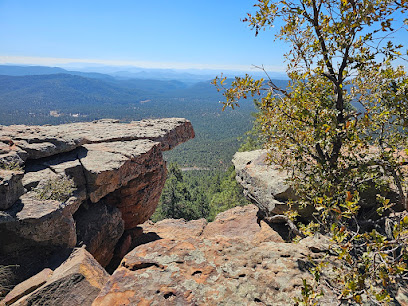
Big 5 Sporting Goods
Discover Quality Outdoor Gear at Big 5 Sporting Goods - Your Adventure Awaits in Payson, Arizona.

Paul's Ace Hardware & Hearth Shoppe
Shop at Paul's Ace Hardware & Hearth Shoppe in Payson, Arizona for a comprehensive range of home improvement tools and supplies with expert assistance.

Forest Lakes General Store
Explore the scenic Forest Lakes General Store, your one-stop destination for camping gear, groceries, and local brews in Arizona's natural paradise.

Sweet Country Charm Fudge & Gifts
Discover the sweetness of Payson at Sweet Country Charm Fudge & Gifts, a heavenly candy store offering delectable fudge, chocolates, and ice cream.

Explore the Attic
Explore the Attic in Payson, AZ offers a unique blend of gift shop, art gallery, and antique store, perfect for finding local treasures and creative souvenirs.

Dollar Tree
Discover unbeatable deals at Dollar Tree in Payson, AZ - your go-to destination for budget-friendly shopping, crafts, groceries, and unique finds!

The Shroom Room
Explore The Shroom Room in Payson, AZ for unique gifts, delicious mushroom coffee, and a cozy atmosphere that embodies local charm.

Western Village Of Payson Arizona
Explore the eclectic treasures at the Western Village of Payson, Arizona, where unique collectibles and local artistry await every visitor.
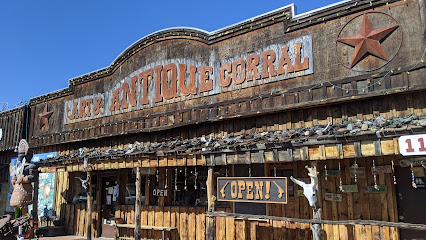
Back To Basics
Explore Back To Basics in Payson, AZ for unique gifts, organic foods, and local treasures that celebrate the essence of Arizona.
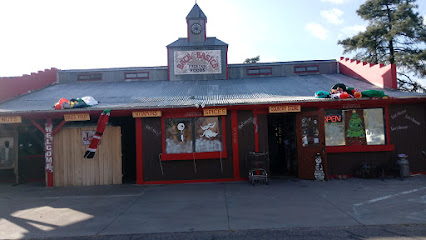
Time Out Inc. Thrift Shop
Explore the unique treasures and vintage finds at Time Out Inc. Thrift Shop in Payson, Arizona—a thrift store with a purpose!

Candle Factory
Experience the enchanting world of handcrafted candles at the Candle Factory in Payson, AZ, where every scent tells a story.
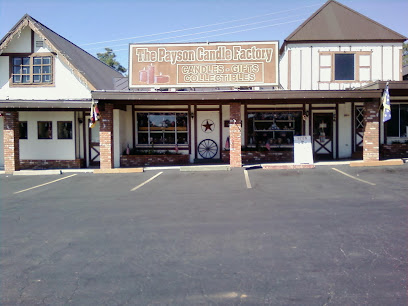
Essential bars & hidden hideouts
Mazatzal Hotel & Casino
Experience the thrill of gaming, delicious dining, and restful stays at Mazatzal Hotel & Casino in scenic Payson, Arizona.

Buffalo Bar & Grill
Buffalo Bar & Grill in Payson, AZ: Enjoy hearty dishes and a vibrant atmosphere amid the stunning beauty of the Southwest.

Macky's Grill
Experience the best of American comfort food at Macky's Grill in Payson, AZ, a family-friendly restaurant offering delightful meals and warm hospitality.

Fargo's Steakhouse
Indulge in the finest cuts of meat at Fargo's Steakhouse, a premier dining destination in Payson, Arizona.

Red Onion Bar & Grill
Experience the heart of American cuisine at Red Onion Bar & Grill in Heber-Overgaard, where delicious flavors meet a cozy atmosphere.

Crosswinds Restaurant
Experience the heart of American cuisine at Crosswinds Restaurant, where delicious breakfasts and lunches await in beautiful Payson, Arizona.

Chili's Grill & Bar
Experience the vibrant flavors of America and Tex-Mex at Chili's Grill & Bar in Payson, perfect for families and travelers alike.

Duza's Kitchen
Discover Duza's Kitchen in Payson, AZ – a delightful restaurant offering a perfect blend of Southwestern cuisine and cozy coffee shop vibes for your dining pleasure.

Wild Women Saloon and Grill
Discover the vibrant flavors of American cuisine at Wild Women Saloon and Grill, a charming dining gem in Heber-Overgaard, Arizona.

Pinewood Tavern
Experience the warmth and charm of Pinewood Tavern, a cozy pub in Arizona offering craft beer, hearty meals, and a welcoming atmosphere.

Tiny's Family Restaurant And lounge
Experience family-friendly dining at Tiny's Family Restaurant in Payson, Arizona, featuring a diverse menu and a cozy atmosphere for all.

Creekside Tavern
Discover Creekside Tavern, where hearty meals, local brews, and stunning nature views come together in Payson, Arizona.

Rim Country BBQ and Wood-Fired Pizza
Discover the best barbecue and artisan pizza at Rim Country BBQ and Wood-Fired Pizza in Payson, Arizona - a true culinary delight for food lovers!

THAT Brewery & Pub
Discover the perfect blend of craft beer, barbecue, and breathtaking views at THAT Brewery & Pub in Pine, Arizona.

Backwoods Bar & Grill
Experience the flavors of American cuisine in the heart of Payson, Arizona at Backwoods Bar & Grill, where comfort meets culinary excellence.
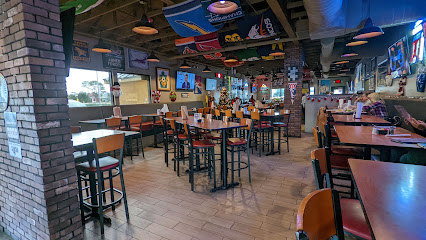
Local Phrases about Mogollon Rim
-
- HelloYa'at'eeh
[yah-ah-tay] - GoodbyeHa'íí shaa
[hah-ee shah] - YesAhe'
[ah-hay] - NoDibé
[dee-bay] - Please/You're welcomeBilasáana
[bee-lah-sah-nah] - Thank youAhéhee'
[ah-hay-hay] - Excuse me/SorryT'áá hwó' ají t'éego
[tah-hah whoa ah-hee tay-go] - How are you?Nahxééh
[nah-hay] - Fine. And you?Bééhózin
[bay-hoe-zeen] - Do you speak English?Baa shízin?
[bah shee-zeen] - I don't understandT'áá hwó' ají t'éego
[tah-hah whoa ah-hee tay-go]
- HelloYa'at'eeh
-
- I'd like to see the menu, pleaseNihí naałniih
[nee-hee nah-al-nee] - I don't eat meatNaakaii yá'át'ééh
[nah-kah-ee yah-ah-tay] - Cheers!Yá'át'ééh
[yah-ah-tay] - I would like to pay, pleaseNihí naałniih
[nee-hee nah-al-nee]
- I'd like to see the menu, pleaseNihí naałniih
-
- Help!Ayóó'ah
[ah-yoe-ah] - Go away!Shoo
[shoe] - Call the Police!Shí naaltsoos
[shee nah-alt-sohs] - Call a doctor!Shí níłchíí'
[shee neel-chee] - I'm lostNahasdzaan
[nah-ha-stzah-ahn] - I'm illNaaltsoos
[nah-alt-sohs]
- Help!Ayóó'ah
-
- I'd like to buy...Nihí naałniih
[nee-hee nah-al-nee] - I'm just lookingHalzhó
[hahl-zhoe] - How much is it?T'áá hwó' ají t'éego
[tah-hah whoa ah-hee tay-go] - That's too expensiveNahasdzáán
[nah-ha-stzah-ahn] - Can you lower the price?T'áá hwó' ají t'éego
[tah-hah whoa ah-hee tay-go]
- I'd like to buy...Nihí naałniih
-
- What time is it?Naaní
[nah-nee] - It's one o'clockTseebíí
[tsay-bee] - Half past (10)Naazbaa
[nahz-bah] - MorningYá'át'ééh abíní
[yah-ah-tay ah-bee-nee] - AfternoonT'áá hwó' ají t'éego
[tah-hah whoa ah-hee tay-go] - EveningT'áá hwó' ají t'éego
[tah-hah whoa ah-hee tay-go] - YesterdayYííłtsoh
[yee-ilt-soh] - TodayDííjí
[dee-jee] - TomorrowT'áá hwó' ají t'éego
[tah-hah whoa ah-hee tay-go] - 1Náhást'éí
[nah-hast-ay] - 2Naaki
[nah-kee] - 3Táá
[tah-ah] - 4Dį́į́'
[dee-dee] - 5Ashdla'
[ah-shlah] - 6Hastą́ą́
[hast-ahn-ahn] - 7Tseebíí
[tsay-bee] - 8Dį́į́'
[dee-dee] - 9Ashdla'
[ah-shlah] - 10Hastą́ą́
[hast-ahn-ahn]
- What time is it?Naaní
-
- Where's a/the...?Táá hwó' ají t'éego
[tah-hah whoa ah-hee tay-go] - What's the address?T'áá hwó' ají t'éego
[tah-hah whoa ah-hee tay-go] - Can you show me (on the map)?T'áá hwó' ají t'éego
[tah-hah whoa ah-hee tay-go] - When's the next (bus)?Táá hwó' ají t'éego
[tah-hah whoa ah-hee tay-go] - A ticket (to ....)Bisóodi
[bee-soh-dee]
- Where's a/the...?Táá hwó' ají t'éego
History of Mogollon Rim
-
The Mogollon Rim has been home to various indigenous groups for thousands of years. The Mogollon culture, after which the rim is named, thrived in this area from around 200 AD to 1450 AD. They were known for their advanced agricultural practices, pottery, and cliff dwellings. Evidence of their presence can still be found through petroglyphs and ruins scattered throughout the region.
-
In the 16th century, Spanish explorers traversed the Mogollon Rim in search of riches and new territories. Notable among them was Francisco Vázquez de Coronado, who led an expedition through the area in 1540. The Spanish influence can still be seen in some of the place names and historical artifacts found in the region.
-
During the 19th century, the Mogollon Rim was a significant battleground in the Apache Wars. The area served as a strategic location for both the Apache warriors and the U.S. military. The rugged terrain provided natural fortifications and hiding places, making it a fierce and challenging theater of conflict. Prominent Apache leaders like Geronimo and Cochise are often associated with the struggles in this region.
-
In the late 19th and early 20th centuries, the Mogollon Rim saw an influx of settlers looking to make a new life in the American West. Homesteaders established farms, ranches, and small communities in this remote area. The remnants of old cabins, fences, and outbuildings still dot the landscape, offering a glimpse into the lives of these early pioneers.
-
One of the most significant modern events in the history of the Mogollon Rim was the Dude Fire of 1990. This devastating wildfire burned over 28,000 acres and led to significant changes in forest management and fire prevention practices in the region. The fire's impact is still evident in the landscape and serves as a somber reminder of the power of nature.
-
In recent decades, the Mogollon Rim has been the focus of extensive conservation efforts. Organizations and government agencies work tirelessly to preserve the unique ecosystems, wildlife, and historical sites found in the area. These efforts ensure that the Mogollon Rim remains a pristine and accessible destination for future generations to explore and enjoy.
Mogollon Rim Essentials
-
The Mogollon Rim is located in Arizona, USA, and spans approximately 200 miles across the state. The nearest major airport is Phoenix Sky Harbor International Airport (PHX), which is about a 2-hour drive away. From Phoenix, you can rent a car and drive via State Route 87 or Interstate 17. Flagstaff Pulliam Airport (FLG) is another option, located about 1.5 hours away. Public transportation options are limited, so renting a car is highly recommended for flexibility.
-
Given the expansive nature of the Mogollon Rim, having a car is essential for getting around. Several rental car agencies are available at both Phoenix Sky Harbor International Airport and Flagstaff Pulliam Airport. For those interested in a more rugged experience, consider renting a 4x4 vehicle to explore the various off-road trails. There are no public bus services that cover the entire Rim area, although some guided tours may offer transportation to specific attractions.
-
The currency used is the United States Dollar (USD). Credit and debit cards are widely accepted, but it's advisable to carry some cash for remote areas where card transactions may not be possible. ATMs can be found in nearby towns such as Payson, Sedona, and Flagstaff. Make sure to have enough cash for activities like camping fees, park entrance fees, and small local businesses.
-
The Mogollon Rim is generally safe for tourists, but it's essential to take standard precautions. Wildlife encounters and rough terrain can pose risks, so always stay on marked trails and keep a safe distance from animals. Crime rates are low, but it's wise to secure your belongings and avoid isolated areas at night. There are no specific neighborhoods with high crime rates targeting tourists, but staying vigilant is always advisable.
-
In case of an emergency, dial 911 for immediate assistance. The nearest medical facilities are located in towns such as Payson and Flagstaff. It's recommended to have travel insurance that covers medical emergencies and evacuation, especially if you plan on hiking or engaging in other outdoor activities. Carry a first-aid kit and familiarize yourself with the nearest locations of ranger stations and hospitals.
-
Fashion: Do wear comfortable, weather-appropriate clothing and sturdy hiking boots. Don't wear flip-flops or high heels on trails. Religion: Do respect the beliefs and traditions of Native American tribes in the area. Public Transport: Do rent a car for flexibility. Don't rely on public transport for exploring the Rim. Greetings: Do greet people with a friendly hello or a handshake. Eating & Drinking: Do try local cuisine and drink plenty of water. Don't leave trash behind; practice Leave No Trace principles.
-
To experience the Mogollon Rim like a local, consider visiting during the shoulder seasons (spring and fall) when the weather is pleasant and crowds are thinner. Pack a picnic and enjoy it at one of the many scenic overlooks. Engage with local communities, especially in towns like Payson and Pine, where you can learn about the area's history and culture. Don't miss the opportunity to stargaze at night; the Rim's high elevation and low light pollution make it an excellent spot for astronomy enthusiasts.
Nearby Cities to Mogollon Rim
-
Things To Do in Sedona
-
Things To Do in Flagstaff
-
Things To Do in Scottsdale
-
Things To Do in Mesa
-
Things To Do in Gilbert
-
Things To Do in Tempe
-
Things To Do in Chandler
-
Things To Do in Prescott
-
Things To Do in Phoenix
-
Things To Do in Grand Canyon Village
-
Things To Do in Tucson
-
Things To Do in Gallup
-
Things To Do in Page
-
Things To Do in Kingman
-
Things To Do in Lake Havasu City













